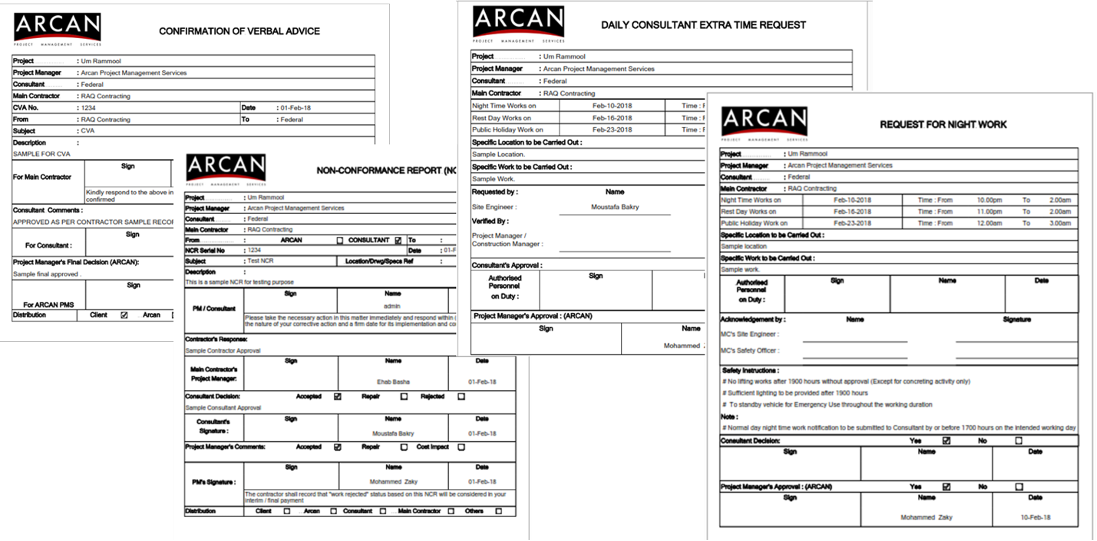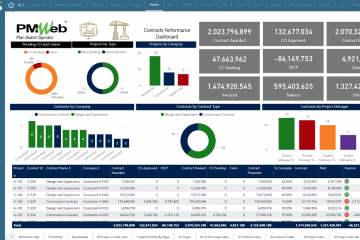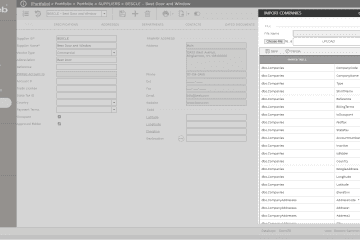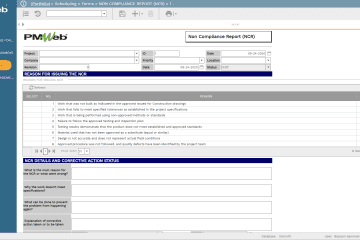One of the essential requirements in delivering capital projects is managing the formal communication associated with the everyday project management processes between the different entities that are part of the project. Those are the hundreds of functions that relate to project communications, schedule, cost, contracts, quality assurance, and quality control, health and safety, risks and issues, among others.
Project owners are usually the entity that will be impacted most when the content of those formal communications are not readily available to be monitored, reviewed, and acted on. This is true because the project owner is the only entity with contractual agreements with the other entities involved in delivering the project, including project management consultants, engineering consultants, contractors, and suppliers. Therefore, when any of those entities cause harm to another entity when needed formal communications are not performed as per the project management plan and related contract agreements, the project owner will become the entity liable for those actions.
Therefore, the project owner should always demand having access to a single real-time version of the truth report that details every formal project communication status. Those are usually logs and registers for which the content will be captured from the information included in those communications. PMWeb Project Management Information System (PMIS) comes ready with many of those logs prepared to use, plus there is the option to customize the output in the desired form and format. Most of those logs and registers allow drilling to the specific record from which the information was extracted from.
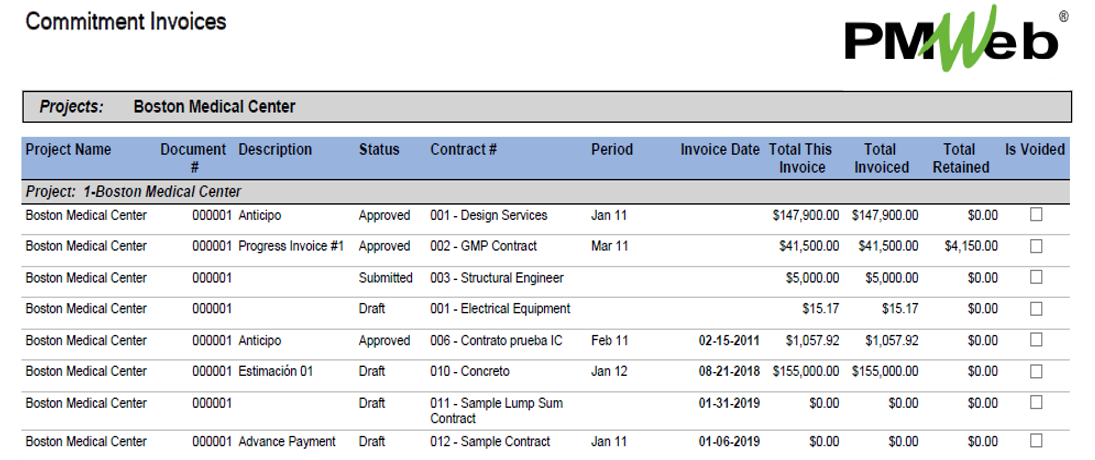
This PMWeb report will be automatically generated from the project management input forms that either comes ready with PMWeb or those created using PMWeb Visual Form Builder. PMWeb ready to use forms include safety incidents, request for information, minutes of the meeting, daily reports, snag list, submittals, transmittals, contracts, potential change orders, change orders, progress invoices, timesheets, risk register, among many others. For the default forms, there is no limit to the number of additional fields that can be added in the form for which the values could be text, numeric, currency, Boolean, lists, among others. Also, some of the default forms have built-in formulas to calculate the values of other fields like for example the progress invoice.
In addition, some of the default forms can be used to generate other default forms. For example, the potential change order can generate the change order when the possible change order is approved or develop the next record, like, minutes of meeting and interim progress invoices. Further, some of the default forms as links to the project schedule activity that could be impacted by the formal communication such as RFI, meeting minutes, daily reports, timesheets, submittals, drawings, among others.
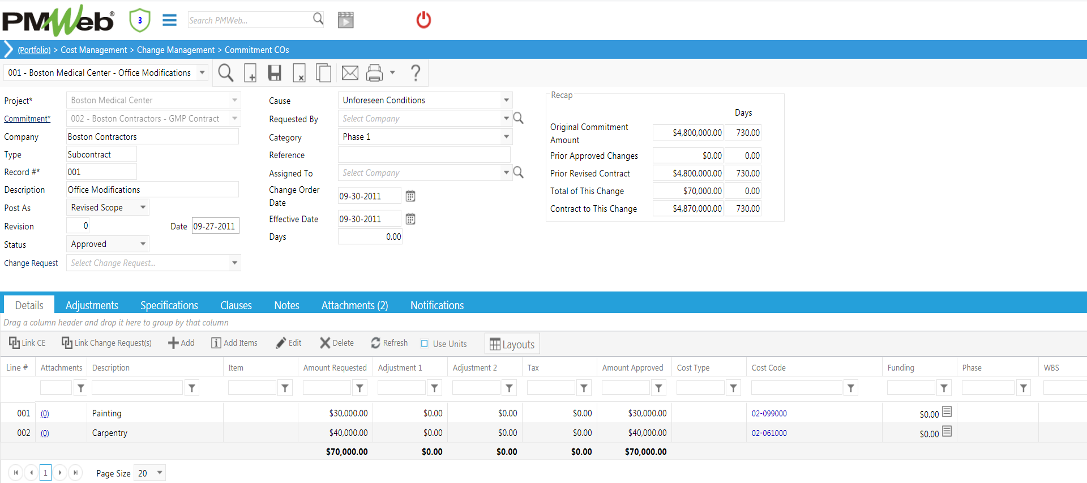
PMWeb Visual Form Builder allows creating all additional forms needed to manage the other project management processes. Those could include work inspection requests, non-compliance reports, no objection certifications, work permits, site access permits, lessons learned, confirmation of verbal instruction, site work instruction, substantial certificate, mobilization, and demobilization checklists, among many others. The Visual Form Builder allows adding all needed fields as well as multiple tables to capture the needed information.

For both PMWeb default forms and newly created forms, access rights for each form module and fields within each form can be established to ensure that forms are only accessed and completed by their intended individuals who could be representing the different entities involved in the project.
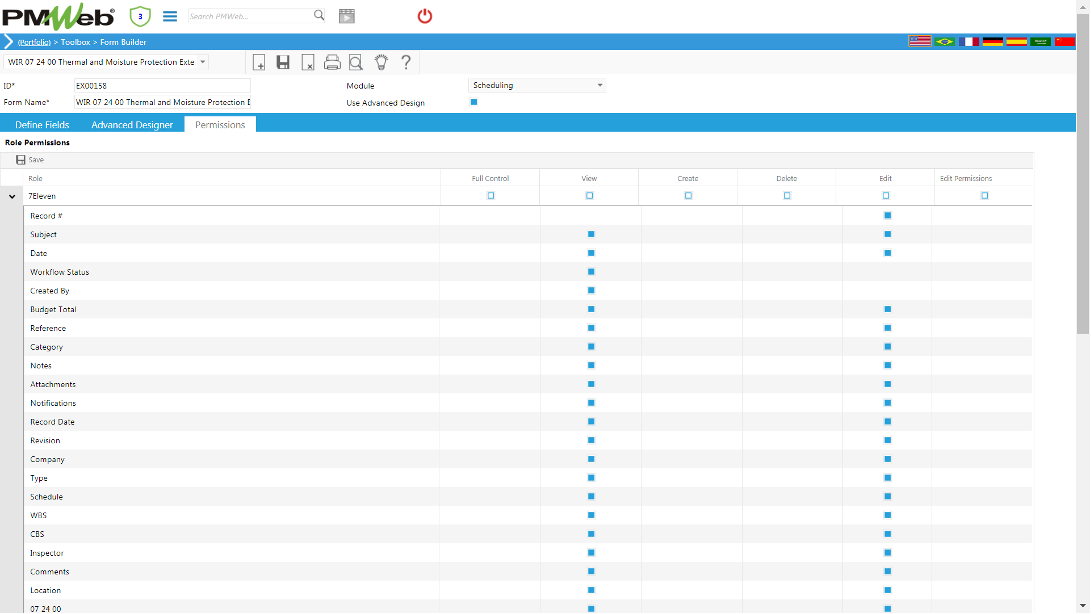
In addition, PMWeb allows attaching all supportive documents, usually uploaded into the PMWeb Document Management repository. Also, links to other relevant PMWeb records and imported MS Outlook emails can also be added. This will ensure complete transparency into the content of each formal project communication.
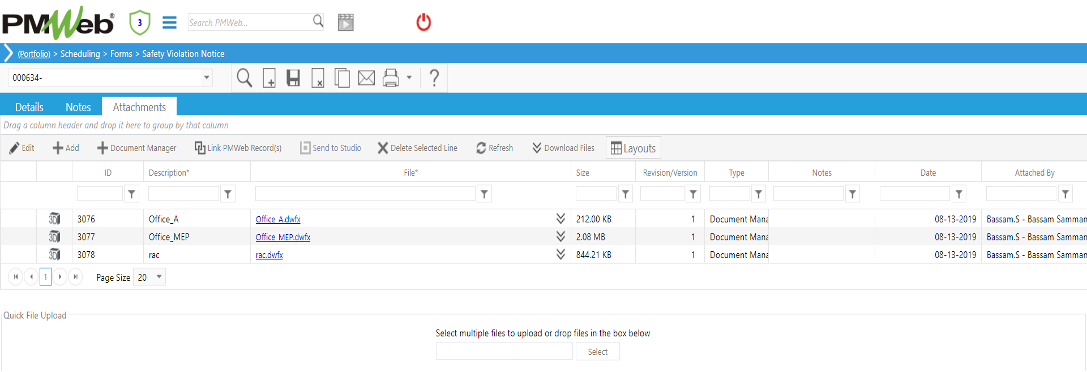
In addition to capturing the content for all project management processes in the designated default form or custom created form, most capital projects require that all formal communications be printed to be wet-signed and stamped to be formally shared with the other project entities. The output form for those communications could differ from one project owner to another and from one project to another. PMWeb allows designing those forms as per the project management plan requirement for each project. The output form can be designed to include the list of all attached documents as well as the status of workflow tasks assigned to the form.
